Get Your Art Into the Carnegie Museum of Art
 Exterior view of the Sarah Mellon Scaife Gallery. | |
| Location of CMMA in Pennsylvania. Show map of Pittsburgh Carnegie Museum of Fine art (Pennsylvania) Show map of Pennsylvania Carnegie Museum of Fine art (the United States) Show map of the United States | |
| Former name | Department of Fine Arts, Carnegie Institute |
|---|---|
| Established | Nov 5, 1895 (1895-xi-05) |
| Location | 4400 Forbes Ave, Pittsburgh, Pennsylvania 15213 |
| Coordinates | 40°26′37″Due north 79°56′56″Due west / twoscore.443690°Due north 79.948976°West / 40.443690; -79.948976 |
| Type | Art Museum |
| Accreditation | American Alliance of Museums |
| Managing director | Eric Crosby |
| Nearest car park | On site and street |
| Website | cmoa |
The Carnegie Museum of Art, abbreviated CMOA, is an art museum in the Oakland neighborhood of Pittsburgh, Pennsylvania. The museum was founded in 1895 by the Pittsburgh-based industrialist Andrew Carnegie.[1] [ self-published source? ] It was the commencement museum in the U.s.a. with a primary focus on gimmicky art.[2] As instructed by its founder at the inception of the Carnegie International in 1896, the museum has been organizing many gimmicky exhibitions that showcase the "Erstwhile Masters of tomorrow".[iii]
History [edit]
The museum's origins can be traced to 1886 with Andrew Carnegie's initial concept:[four] "I am thinking of incorporating with the plan for a library that of an art-gallery in which shall exist preserved a record of the progress and evolution of pictorial art in America." Dedicated on November 5, 1895, the fine art gallery was initially housed in the Carnegie Libraries of Pittsburgh Main Branch in Oakland.
Carnegie envisioned a museum drove consisting of the "Old Masters of tomorrow".[1] The museum received a major expansion in 1907 with the improver of the Hall of Architecture, Hall of Sculpture, and Bruce Galleries, with funds over again provided past Carnegie.[5]
Under the directorship of Leon Arkus, the Sarah Mellon Scaife Gallery (125,000 square feet) was built as an addition to the existing Carnegie Plant. Designed by architect Edward Larrabee Barnes, information technology first opened in 1974 and more than doubled the museum's exhibition space, plus added a children'due south studio, theater, offices, café, and bookstore.[6] The New York Times art critic John Russell described the gallery as an "unflawed paradise." The gallery has been renovated several times since its original creation, most recently in 2004.
Today the museum continues Carnegie'southward beloved of contemporary fine art by staging the Carnegie International every few years. Numerous significant works from the Internationals take been acquired for museum'southward permanent collection including Winslow Homer's The Wreck (1896) and James A. McNeill Whistler'due south Arrangement in Black: Portrait of Señor Pablo de Sarasate (1884).
Collections and departments [edit]

Neapolitan presepio seasonally displayed at the Carnegie Museum of Art
The museum's curatorial departments include: Fine Arts (Contemporary Art, Works on Paper), Decorative Arts, Architecture, and Photography. The museum presents equally many as 15 changing exhibitions annually. Its permanent collection comprises roughly 35,000 works and includes European and American decorative arts from the late seventeenth century to the present, works on paper, paintings, prints (notably Japanese prints), sculptures and installations. The museum has notably potent collections of both aluminum artifacts and chairs. Approximately 1,800 works are on view at any given time.
The museum also maintains a big annal of negatives from African-American photographer Charles "Teenie" Harris.[one]
Heinz Architectural Center - The drove includes works in architecture, mural pattern, applied science, and furniture and interior design. The center'due south facilities includes 4,000 square feet of exhibition space and a library housing several 1000 books and journals.
The Hillman Photography Initiative - The Initiative hosts a variety of projects including alive public events, web-based projects, documentary videos, art projects, and writing. Yearly programming is determine by a group of five "agents" who plan and curate each 12 month cycle of works hosted.[vii]
Collection Themes
- Contemporary Glass
- Teenie Harris Photographs: Erroll Garner and Jazz from the Loma
- Carnegie International
- Japanese Prints
- Pittsburgh Artists
- The Art of the Chair
- Pictorialist Photography
- Painting and Sculpture 1860–1920
- W. Eugene Smith
Galleries [edit]
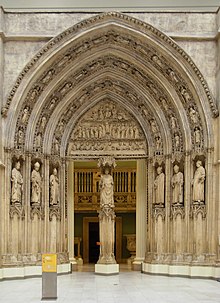
- Ailsa Mellon Bruce Galleries (1907) – originally synthetic display reproduction bronze casts from Pompeii and Herculaneum. Renovated in 2009, the galleries showroom more than 500 objects representing American and European decorative arts from the Rococo and Neoclassical periods of the 18th century to contemporary design and arts and crafts.
- Hall of Architecture (1907) – Today the Hall of Compages houses almost 140 full-size plaster casts of elements of buildings constitute in the ancient and classical civilizations of Egypt, Greece and Rome, and from Romanesque, Gothic and Renaissance Europe. As such, it is the largest drove of plaster casts of architectural masterpieces in America and i of the three largest in the world, forth with those of the Victoria and Albert Museum in London and the Musée national des Monuments Français in Paris.
- Hall of Sculpture (1907) – modeled upon the Parthenon's inner sanctuary, and originally created to business firm the museum's 69 plaster casts of Egyptian, Near Eastern, Greek, and Roman sculpture. Today it exhibits works from the permanent collections, with its balcony displaying decorative arts objects from the eighteenth to the twentieth century.
- Heinz Architectural Center (1993) – dedicated to the collection, report, and exhibition of architectural drawings and models.
- Scaife Galleries – Focused primarily on European and American art since 1850, but also including collections of African art, classical and Egyptian art, and older European and American art.
- Works on Newspaper Gallery
- Forum Gallery – Located on the kickoff floor of the museum just inside the Forbes Avenue entrance, this unmarried room is dedicated to temporary exhibitions of contemporary art. It opened November three, 1990 with support from the National Endowment of the Arts. The commencement exhibition, Forum 1, was a solo show of Jeff Wall. Subsequent exhibitions were numbered sequentially (for example, Forum xl featured Felix de la Concha). Unlike larger museum exhibitions, which can have upwards to iii years to plan and execute, Forum shows come together relatively quickly, and are open to whatever curatorial staff's vision. In the words of Vicky Clark, a longtime curator at the museum, "The idea was to make sure that we had an exhibition of contemporary fine art gear up at all times."[viii]
Educational programs [edit]
Sabbatum art classes in the galleries of Carnegie Museum of Art have been conducted for over 75 years. Alumni of the plan include Andy Warhol, photographer Duane Michals, and contemporary artist Philip Pearlstein. The museum has classes specific to various historic period groups.[nine]
Gallery [edit]
-

Ivory portable altar, 14th Century, French
-

-
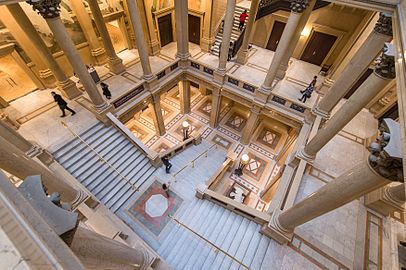
The 1907 Grand Staircase
-

Statuary ritualistic vessel, 1300-1150 B.C.East., Shang Dynasty, Prc
-
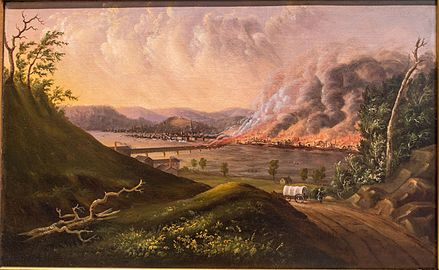
View of the Nifty Fire of Pittsburgh, 1846, oil on canvas, William Coventry Wall
-

Housepost, circa 1930s, Yoruba Culture, Africa
-

-
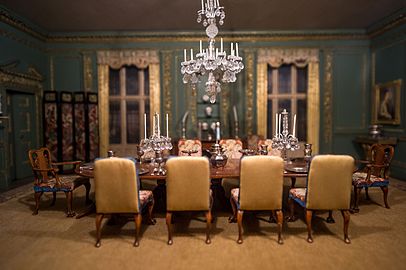
Miniature room on display, Ruth McChesney
-

Wheat Fields Later the Rain (The Obviously of Auvers), 1890, oil on sheet, Vincent van Gogh
-

Catafalque for relics of a saint (châsse), 13th Century, French
-

Stele of Vishnu with Avatars and attendant deities, 1100s C.E., from central Bharat
Past directors [edit]
- John W. Beaty (1896–1921)[10]
- Homer Saint-Gaudens (1922–1950)
- Gordon Bailey Washburn (1950–1962)[11]
- Gustave Von Groschwitz (1963–1968)
- Leon Arkus (1968–1980)[12]
- John R. Lane (1980–1987)[13]
- Phillip M. Johnston (1988–1996)[14]
- Richard Armstrong (1996–2008)[15]
- Lynn Zelevansky (2009–2017)
- Eric Crosby (2018–nowadays)[sixteen]
Come across also [edit]
- Carnegie Museums of Pittsburgh
- Homer Saint-Gaudens
- Frick Art & Historical Centre
- List of museums in Pennsylvania
- Sally Dixon
References [edit]
- ^ a b c About Carnegie Museum of Fine art: History Archived Oct 13, 2008, at the Wayback Car
- ^ "History". Carnegie Museum of Fine art . Retrieved 2020-10-19 .
- ^ Micucci, Dana (2008-05-30). "Carnegie Museum, in Pittsburgh, shows contemporary fine art'south". The New York Times. ISSN 0362-4331. Retrieved 2018-02-07 .
- ^ W. J. Holland, LL.D., "The Carnegie Museum", in Popular Scientific discipline, May 1901.
- ^ Memorial of the celebration of the Carnegie Plant at Pittsburgh, Pa., April 11, 12, 13, 1907.
- ^ Ellen S. Wilson, "The Standing History of the Scaife Galleries", in Carnegie Online, July/August 2003 "Archived re-create". Archived from the original on 2008-09-07. Retrieved 2009-11-29 .
{{cite spider web}}: CS1 maint: archived copy as title (link). - ^ Hillman Photography Initiative Announced
- ^ Pifer, Jenelle (Winter 2015). "The Fine art of the At present". Carnegie. Carnegie Museum of Art: 24–29.
- ^ "School of Rock, Art, and Science". Carnegie Museums of Pittsburgh.
- ^ "Historical Note | A Finding Assist to the Carnegie Constitute, Museum of Art records, 1883-1962, bulk 1885-1962 | Digitized Collection". world wide web.aaa.si.edu . Retrieved 2022-02-03 .
- ^ "Oral history interview with Gordon Bailey Washburn, 1970 March four-18". www.aaa.si.edu . Retrieved 2022-02-03 .
- ^ "The Fourth dimension of Arkus". Pittsburgh Quarterly . Retrieved 2022-02-03 .
- ^ "John R. Lane, Course of 1966". Alumni Awards . Retrieved 2022-02-03 .
- ^ Gangewere, Robert J. (2011-09-30). Palace of Culture: Andrew Carnegie's Museums and Library in Pittsburgh. Academy of Pittsburgh Press. ISBN978-0-8229-7969-2.
- ^ "Richard Armstrong becomes Director of Carnegie Museum of Art". carnegiemuseums.org . Retrieved 2022-02-03 .
- ^ "Eric Crosby to Lead the Carnegie Museum of Art". www.artforum.com . Retrieved 2022-02-03 .
External links [edit]
- Official website
- Carnegie Museums
- A finding help to the Carnegie Institute, Museum of Art records, 1883-1962, majority 1885-1940, in the Archives of American Art, Smithsonian Institution
Source: https://en.wikipedia.org/wiki/Carnegie_Museum_of_Art

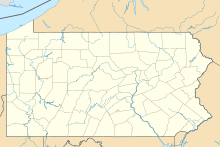

0 Response to "Get Your Art Into the Carnegie Museum of Art"
Post a Comment